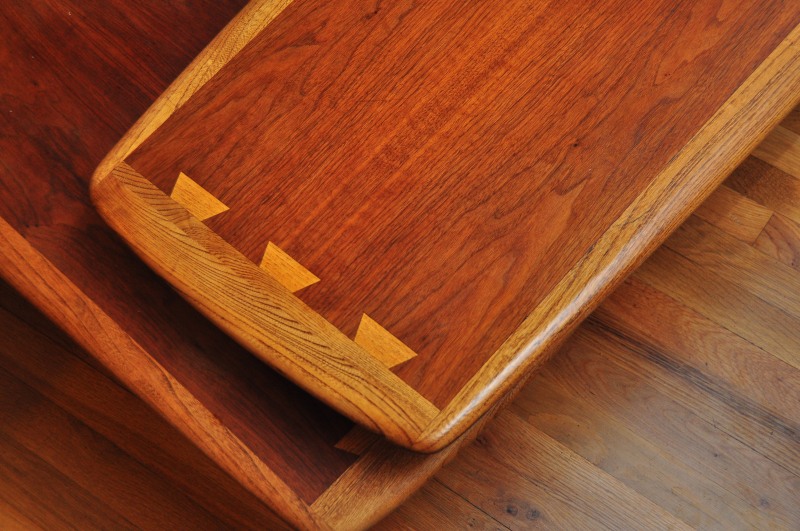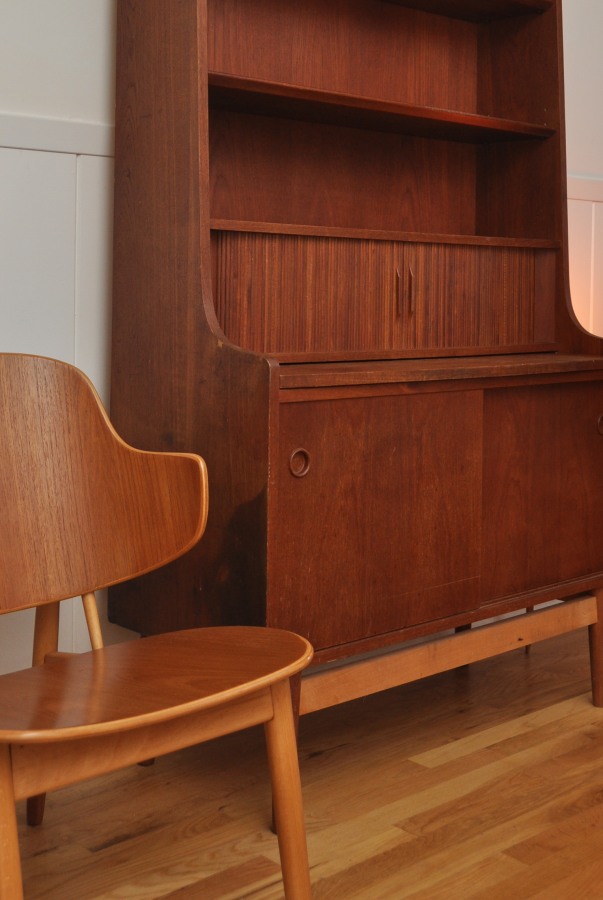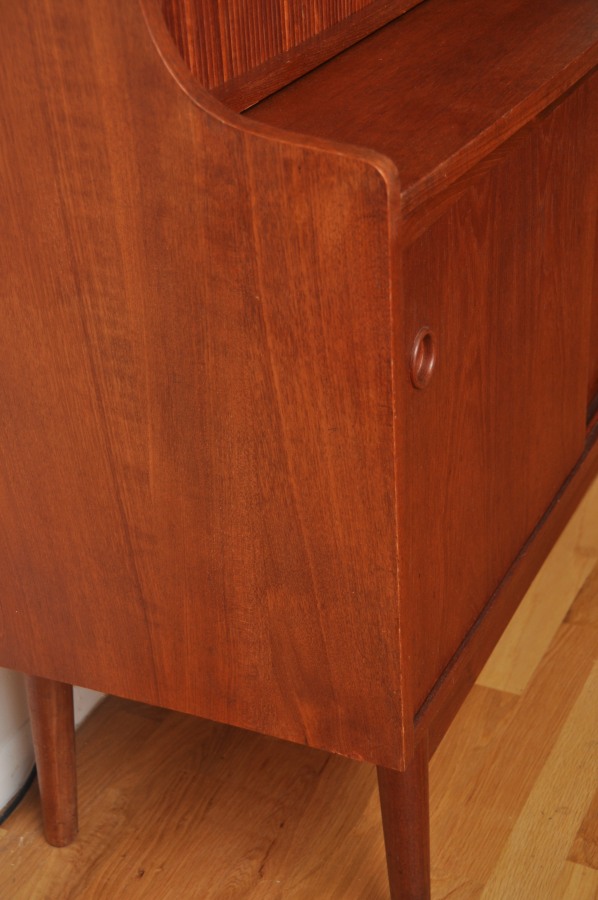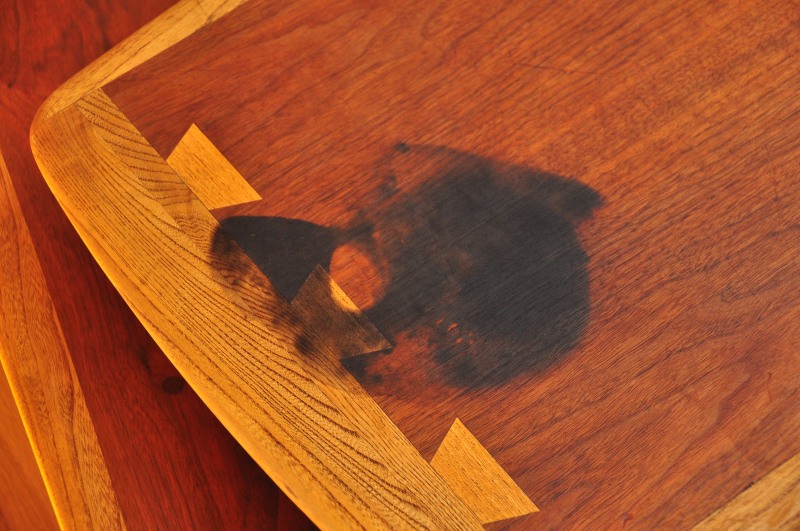
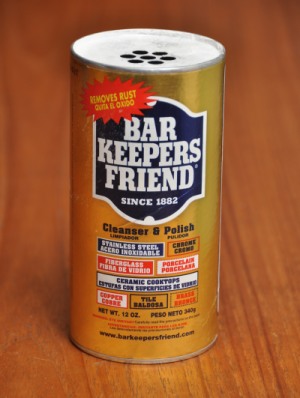
While Oxalic Acid can be purchased as a specialized "Wood Bleach" at woodworker's supply stores, it is also present as an ingredient in a household cleanser that is commonly available here in the United States, known as "Barkeeper's Friend". This is what I used to bleach out all of the iron oxide stains that are shown on this page, often with dramatic results. It is available at most grocery stores, and I have even seen it in Home Depot, in their cleaning section.
I have used this product to remove dark stains on many different pieces of mid-century teak furniture, which typically has an oil finish, rather than varnish. If your dark stain is under varnish, you may have to strip off the varnish layer before you can chemically treat the stain.
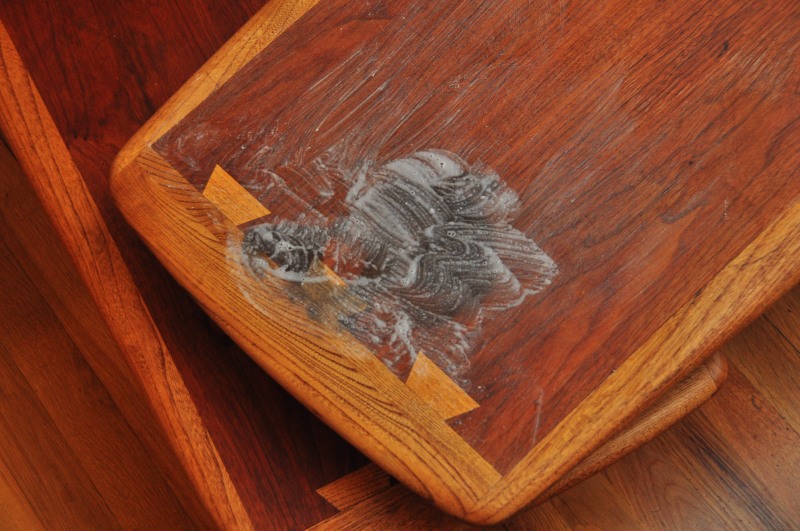
To apply, sprinkle a generous amount of the Barkeeper's Friend cleanser into a glass or ceramic mixing bowl (the Oxalic Acid it contains can discolor metals) and make a fairly thick paste by adding water. You can add normal tap water, which is what I have always used, or use distilled water. The paste I make is often a bit more thick than what is shown in this photo.
If you wish, you can first apply a small amount to an inconspicuous area of the wood surface, to make sure it does not have a negative affect. I have not had any negative effects thus far, on any of the furniture I have used this solution on.
You can apply it with a disposable paint brush, covering the entire stain, and then let it sit until it dries out.
At that point, you can add another application on top of the first one. It generally takes a few applications, although you should see the stain growing lighter each time. In the event you see no change after several applications, it may be the case that the stain has resulted from some other cause, such as from food, wine, etc., and might be better removed with hydrogen peroxide, or regular bleach.
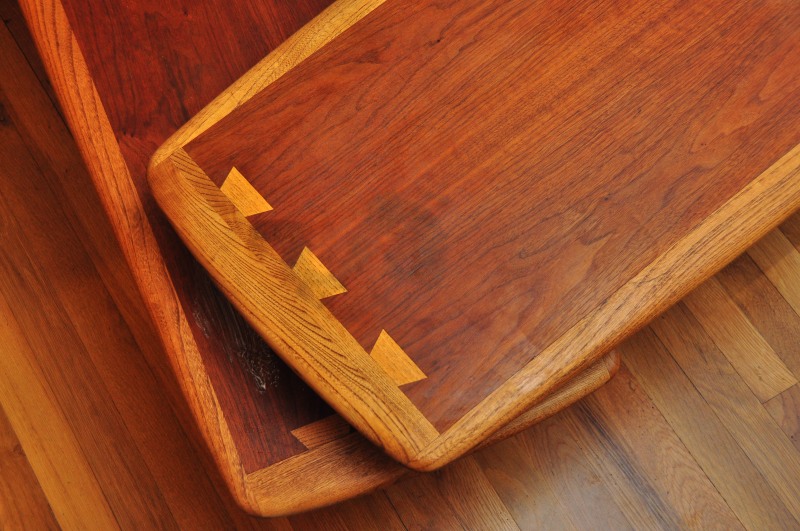
In this image I have done several applications of the Barkeeper's Friend paste, and you can see that while a stain still remains, it has become considerably lighter. I will now continue to do more applications of the paste.
If you notice any subtle lightening of the normal wood color in the area of the stain as a result of the application, you can apply a coating of the paste to the entire surface being treated, so that the color remains consistent over the whole surface as the stain is being treated.
